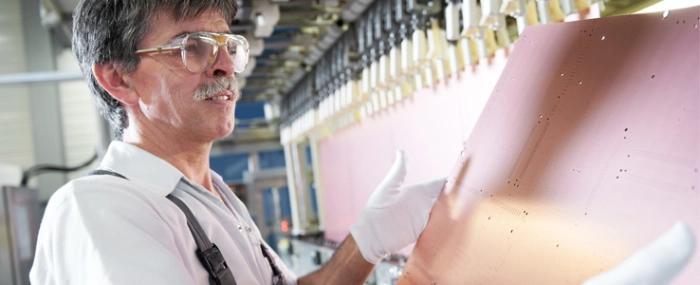
© Schweizer Electronic AG (illustration purpose only)
PCB |
Staying put during the COVID-19 pandemic
TPCA (Taiwan Printed Circuit Association) announced the production and sales data for Q1 2020; the output value of Taiwan cross-strait PCB industry totalled NT$136.9 billion (approx. US$4.541 billion) in Q1/2020.
Compared to NT$136.2 billion in the same period last year, a modest growth of 0.5% was reported. Taiwan-invested enterprises manufactured around 60.7% of their products in mainland China; the output value was estimated to reach NT$155.2 billion in Q2 2020.
As indicated by TPCA, the reason that the output value of Taiwan cross-strait PCB industry Q1 wasn’t seemingly impacted by the global pandemic was due to the predominance on mid and high-end products. Based on the product segmentation of the first quarter, the constructions of 5G cell sites and large data centres managed to maintain their implementation paces since the second half of 2019, and therefore were not impacted by the COVID-19 pandemic.
Demands for high-end computing chips and high-speed memory caches continued to be high; and such demands also drove soaring ABF substrate productions; IC substrates topped all other products with an annual growth rate of 18.6%. Due to the pandemic impacts on numerous end products, HDI had an inferior growth rate than IC substrates.
Thanks to a unique niche market, Taiwanese high-end HDI suffered relatively minor impacts; and the HDI sector still reported a growth rate of 7.5%. The growth of IC substrates and HDI boards were the key elements to sustain the total output value of Taiwan cross-strait PCB industry from backtracking. In the past two years, Taiwan-invested enterprises manufactured around 63% of their products in mainland China, the ratio dropped to 60.7% in Q1 2020. The pandemic impacts in Q1 were significant across the strait, yet different pandemic outcomes for both regions unfolded in contrasting manners. The importance of diversified manufacturing bases cannot be stressed enough.
On the performances of other products, as Rigid-Flex PCBs are intertwined with smart phones and their multi-lenses, batteries and wireless earphones, inevitably, various degrees of impacts were observed in Q1; compared to the growth rate in 2019, a steep decline was reported, and the growth rate for Q1 2020 was 4.3%. As smart phone sales continued to plunge, FPC (Flexible Printed Circuit) boards showed a -8.9% downturn. Albeit versatile applications of multi-layer PCBs (4 layers and above), as they were heavily used in the automobile industry, flat car sales figures contributed to the 4.6% drop in Q1.
The COVID-19 pandemic is still in full swing and will take some time to settle, its unprecedented impacts on global economy are yet to be determined. Despite various stimulus packages implemented by many countries, according to ‘Gartner Top Strategic Predictions for 2020 and Beyond’, the decline in productions of end electronic products in 2020 is to be expected. Rigorous demands and markets for 5G cell sites, network equipment and servers are still projected. Whilst the PCB industry in Taiwan benefits from the predominance on mid and high-end products, the second-half year is deemed to be rather optimistic.
Whilst the pandemic is far from over, its ripple effects are already causing waves. Issues such as planning and diversification of manufacturing locations, broad product ranges, smart manufacturing and regional manufacturing, whether the agendas are new or to be revisited, the industry must be perseverant and flexible to get through the tests and challenges again.
